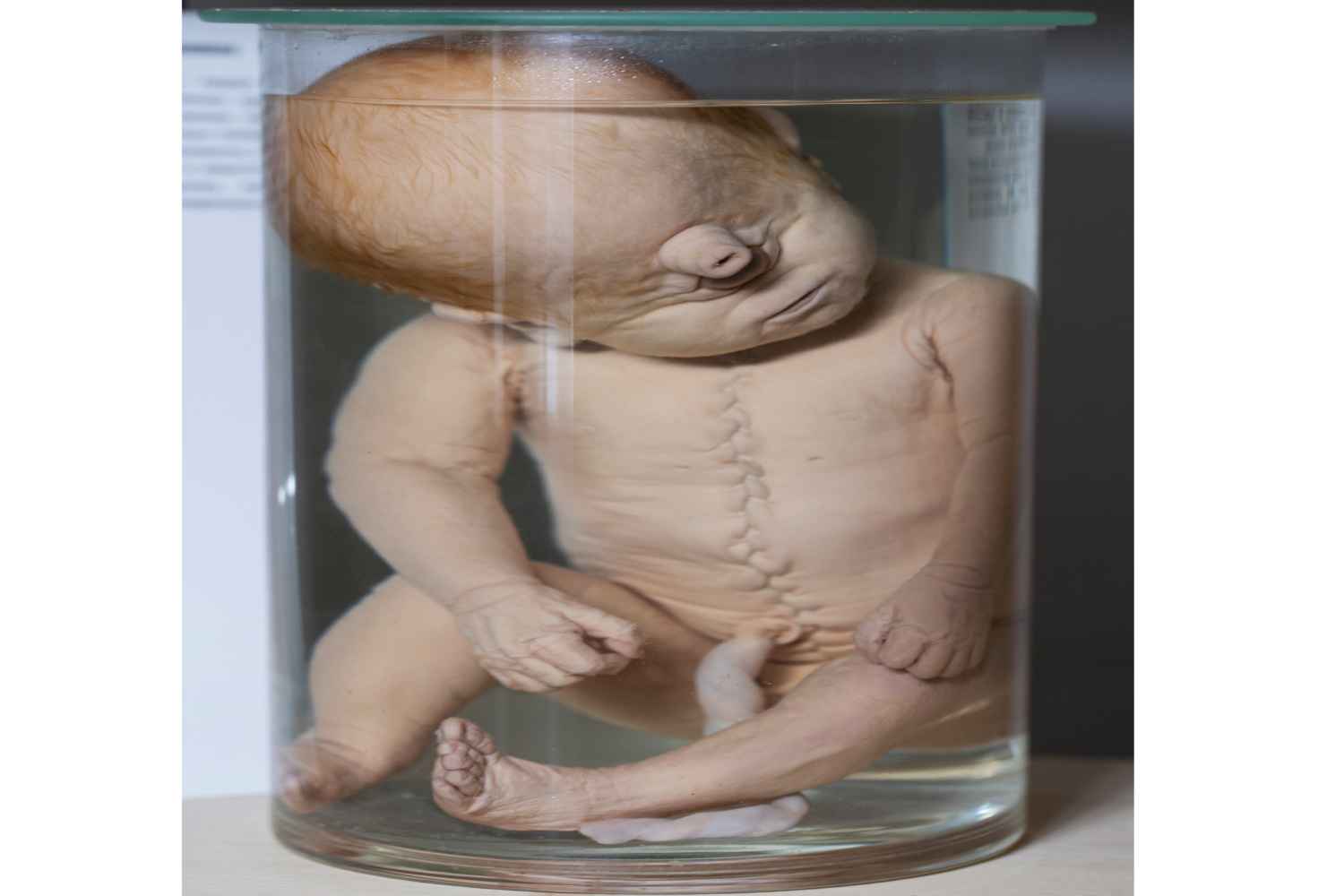
Cyclopia in babies is a disorder where the baby is only born with a single eye. This distortion in the face results from the failed division of the brain into two hemispheres. The brain’s development into two halves is linked with two eyes, two nostrils, and the development of many body parts and their functioning.
Therefore, cyclopia in babies becomes the cause of miscarriage. A baby born with cyclopia doesn’t survive for more than a few hours. Because only 1 in 100,000 babies are born with Cyclopia, the condition is extremely rare.
In This Article
- What is Cyclopia?
- Causes of Cyclopia in Babies
- Signs And Symptoms of Cyclopia in Babies
- Risk Factors for Cyclopia in Babies
- How and When is Cyclopia Diagnosed?
- Treatment of Cyclopia in Babies
- FAQ’s
What is Cyclopia?
Cyclopia is an untreatable disorder where babies are often born with only one eye and a nose-like growth above it. Due to unknown causes, a baby’s forebrain fails to divide into two hemispheres or halves inside the womb.
All humans have a left brain, and a right brain, in charge of different bodily and cognitive functions. Early in pregnancy, a malformation of the brain fuses some nerves, which results in face distortion. According to the World Health Organization (WHO), cyclopia can be detected in the first trimester. It means the first prenatal visit is critical for all parents.
Causes of Cyclopia in Babies
The rarity of cyclopia has made it very difficult to study its causes. Still, researchers have some speculations. As you know, the baby develops in the womb. What goes wrong, due to which the development doesn’t take place properly? The possible causes are
- Gestational diabetes
- Excessive exposure to UV rays during pregnancy
- Infections during pregnancy
- Consuming nicotine or being exposed to it
- Taking alcohol or drugs while pregnant
- Multiple pregnancies (more than one baby in a single pregnancy)
Note that these are only potential causes. If the above-mentioned things apply to a mother, it doesn’t definitely mean that the baby will develop cyclopia.
Signs and Symptoms of Cyclopia in Babies

(Image Source: Wikipedia)
Cyclopia in babies is the result of holoprosencephaly or the failure of the forebrain to divide into two halves as per a study published in the International Journal of Paleopathology.
There are four types of holoprosencephaly, all having slightly different symptoms
1. Middle interhemispheric Holoprosencephaly
In this type of cyclopia, the forebrain divides, but the middle portion doesn’t. Signs include
- A normal appearing face but eyes almost touching each other
- Narrow and a depressed nose
2. Semi-Lobar Holoprosencephaly
The front side of the forebrain becomes fused, but the rest divides. Consequently
- One eye is absent, or
- Eyeballs are abnormally small
3. Lobar Holoprosencephaly
The frontal cortex becomes fused. As a result
- Bilateral cleft lip forms
- Eyes are very close
- The nose is narrow and depressed
4. Alobar Holoprosencephaly
– It’s the most severe form of holoprosencephaly. It’s a complete failure of the forebrain to divide into two hemispheres. The symptoms are
- Only one eye at the place of the nose
- Nose or a nose-like structure above the eye, or
- No Nose
- No eyes
- Kidney-like Sacs but filled with fluid alone
Risk Factors For Developing Cyclopia
Certain conditions can prove to be high-risk factors for giving birth to babies with cyclopia. They include
1. Cyclopia in The Family
If someone in your family gives birth to a baby with cyclopia, you’re also at risk because the same genes might be running in families. Therefore, it is recommended to get preconception testing and genetic testing, and counseling to identify such risks before you conceive.
2. Chromosomal Abnormality
When a baby is conceived, both the father and mother share 23 chromosomes each. Chromosomes carry genetic information. They’re like books for the development of a baby inside the uterus. If a book has some pages with a typo or absent pages (abnormalities), the baby is at risk of getting some disorders.
3. Inbreeding
Let’s say a person has a chromosomal abnormality. When he or she conceives, the baby will get a flawed copy of that chromosome, but also a healthy copy from the mother. The baby will be safe. But if the person gives birth to a baby with someone in the family, both of them might carry the same abnormality. This situation is risky because two flawed copies mean higher chances of developing some disorder.
How and When is Cyclopia Diagnosed?

Cyclopia can be diagnosed during early pregnancy. After around 18-28 days of conception, the developing brain starts to divide. An ultrasound or an MRI during the 3rd or 4th week of pregnancy or a couple of weeks later can provide an image of the fetus. The brain, eyes, nose, and organs can be detected and evaluated.
Any anomalies detected during this period can help diagnose cyclopia in babies. Such procedures are safe for the mother and the baby.
Treatment of Cyclopia in Babies?
The mother and the family need a lot of love and support when cyclopia in babies is identified. Because it has no cure, the baby won’t survive for longer than a few hours after delivery. However, a doctor may identify cyclopia during the first few weeks of pregnancy. Terminating a pregnancy is the only way to reduce the physiological and psychological harm to the mother, baby, and family.
Talking to a genetic counselor is important if a family has a history of cyclopia or any chromosomal abnormality. Cyclopia is not to be blamed on the mother, father, or any caregiver. Medical science will identify the causes of cyclopia in babies one day, the abnormalities will also be treated.
FAQ’s
1. What is The Genetic Cause of Cyclopia?
The rarity of the occurrence of cyclopia among babies makes it extremely difficult for researchers to understand the genetic causes of this condition. Some researchers believe that mutated PAX2 and PAX6 genes are responsible for Cyclopia in babies.
2. Can a Baby With Cyclopia Survive?
It is very rare for a baby with conditions such as cyclopia to survive. Cyclopia often results in miscarriage or stillbirth. After delivery, the baby does not get to live beyond a few hours due to the physical and physiological conditions associated with this genetic anomaly.
Read Also: What Causes Anencephaly During Pregnancy?
